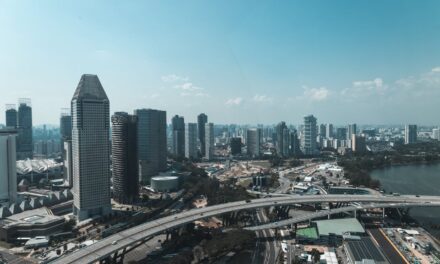The ASEAN manufacturing sector saw conditions improve at their fastest pace in over a year in May, data showed Tuesday, on the back of strong output and new orders rising.
“Demand conditions improved as indicated by a solid and quicker rise in incoming new orders, which in turn supported stronger upticks in output, buying activity and pre-production inventories,” said Maryam Baluch, an economist at S&P Global Market Intelligence, in a note on Tuesday.
The headline S&P Global ASEAN Manufacturing Purchasing Managers’ Index came in at 51.7 in May, up from 51.0 in April. Anything below 50.0 signals that the sector contracted during that month, while anything above indicates expansion.
“Firms recorded a slight fall in employment for the second month running. Inflationary pressures also picked up in May but remain historically subdued and are thus not a cause for immediate concern,” Baluch said.
Deeper look
“The solid rise recorded in output and new orders in May reflected improving demand conditions across majority of the ASEAN economies, especially in Singapore,” Baluch told Diplomatic Network (Asia) in an interview on Tuesday.
Turning to the fall in employment, Baluch said it is unlikely this was due to retrenchments.
“According to our anecdotal evidence, the fall in employment was largely as a result of retention issues and the challenges surrounding replacement of these workers. That said, the downturn was shallow overall and hopefully the sustained rise in production requirements should drive stronger recruitment plans,” Baluch said.
The ASEAN manufacturing sector can expect growth going ahead.
“Our forward-looking indicators, the New Orders Index and the Future Output Index, were both in expansion territory in May,” Baluch said.
“New orders rose solidly and at an accelerated pace and optimism, improved from April’s recent low. This suggests that the ASEAN manufacturing sector could see further growth in production in the coming months.”
Country by country
Myanmar’s manufacturing sector headline figure ticked up into expansion territory in May to 52.1 from 49.9 a month before.
“Reports of a lull in the recent fighting across the country, that began at the end of last year, helped boost the demand environment in May, which prior to April remained in retrenchment mode,” Baluch said in another note released on Monday.
“Quicker expansions in new factory orders and output were recorded during the latest survey period, with the headline PMI index posting in expansion territory for the first time in eight months.”
Indonesia’s manufacturing PMI registered 52.1 in May, slipping from 52.9 in April but still in positive territory.
“May’s survey data showed another month of solid manufacturing sector performance, underpinned by concurrent gains in output and new orders,” said Paul Smith, an economics Director at S&P Global Market Intelligence, on Monday.
“Market demand remains positive, though mainly led by domestic clients as global manufacturing softness continued to manifest itself through a subdued performance for new export orders.”
The headline figure for the Philippines in May came in at 51.9, down slightly from 52.2 a month before.
“Firms struggled to maintain their workforce numbers with job shedding noted for the first time in five months. Though with backlogs continuing to fall, goods producers still appear equipped to deal with tasks on hand,” said Baluch on Monday in a separate note.
Thailand’s manufacturing sector registered improving business conditions in May with a headline figure of 50.3, jumping into expansion territory from 48.6 in April.
“Business conditions in the Thai manufacturing sector improved in May, with higher output and employment more than offsetting lower new orders,” said Trevor Balchin, another economics director at S&P Global Market Intelligence.
“The latest figures also suggested that growth in production, purchasing and backlogs was not accompanied by a rise in inflationary pressures, as input prices continued to fall and output prices were up only marginally.”
Manufacturers in Vietnam recorded a PMI of 50.3, unchanged from April, amid input cost inflation and employment falling.
“The latest S&P Global Vietnam Manufacturing PMI data was something of a mixed bag. On the positive side of the ledger, new orders were up solidly again amid signs that demand growth is being sustained, prompting a sharper increase in production in May,” said Andrew Harker, an economics director at S&P Global Market Intelligence, on Monday.
“On the other hand, there are concerns around staffing levels and inflationary pressures.”
In Malaysia, manufacturers saw conditions improve in May. The headline figure rose to 50.2 from 49.0 a month prior.
“It was encouraging to see employment conditions improve with manufacturers acquiring more headcounts on account of rising new orders. And while the expansion in new orders and production was accompanied by rising inflation, the rates of increase in both input costs and output prices were subdued by historical standards,” said Jingyi Pan, an economics associate director at S&P Global Market Intelligence, on Tuesday.
The S&P Global ASEAN manufacturing PMI is compiled by S&P Global from responses to monthly questionnaires sent to purchasing managers in panels of manufacturers in Indonesia, Malaysia, Myanmar, the Philippines, Singapore, Thailand and Vietnam, totaling around 2,100 manufacturers. These countries account for 98% of ASEAN manufacturing value added, according to World Bank world development indicator.
Data for the PMI were collected between May 10 and 24.







